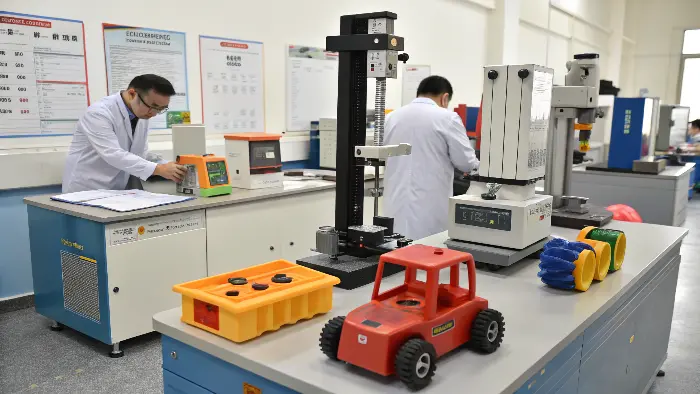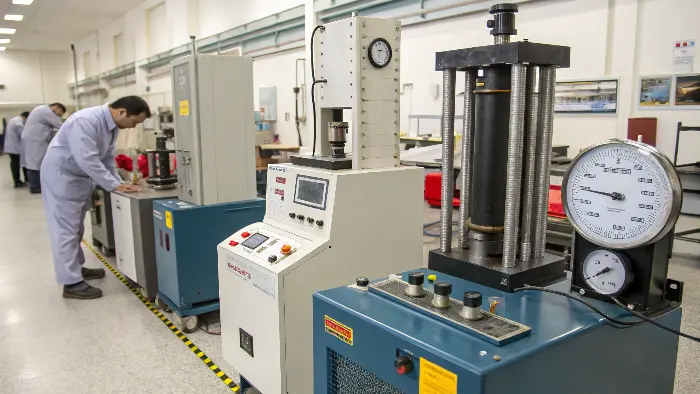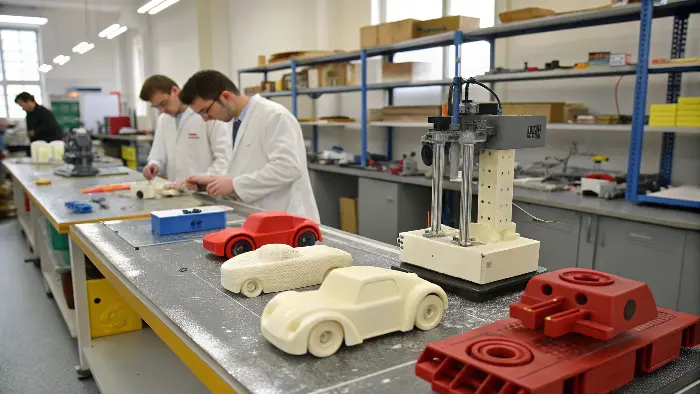Worried about product safety? Substandard toys can break, causing injury and damaging your brand. We ensure quality through rigorous testing, giving you peace of mind.
Pressure and force testing is absolutely vital. It ensures adult toys can withstand expected use without breaking, deforming dangerously, or exerting harmful pressure. This protects users, builds trust, and upholds your brand’s reputation for quality and safety. It’s non-negotiable, really.
Okay, so we know it’s important, but let’s unpack that a bit more, shall we? You might be wondering what exactly goes into this testing and why we at PrivyPlay take it so incredibly seriously. It’s not just about ticking boxes on some form; it’s about genuine care for the end-user experience and, frankly, protecting your brand’s hard-earned rep. Let’s dive in.
So, What’s the Real Scoop on Pressure and Force Testing in Our Niche?
Ever had a product fail unexpectedly? It’s a brand’s nightmare, especially with intimate items. Poorly tested toys risk user harm and those dreaded one-star reviews. Robust testing prevents this, safeguarding users and your reputation. It’s a must, believe me.
Pressure and force testing in adult toys involves mechanically stressing products to see how they perform. We check tensile strength (pulling), compression (squishing), and torsion (twisting). This ensures they won’t break, shatter, or deform in ways that could hurt someone during normal – or even enthusiastic – use.
When I talk about pressure and force testing, I’m really talking about understanding a product’s limits. It’s about pushing things – carefully, mind you – to see where they give. Imagine a dildo, for example. We need to know how much bending force it can take before it snaps. Nobody wants that surprise, right? Or think about a vibrator with a slender neck – how much twisting can it endure before the motor connections get iffy or the plastic fatigues? It’s not just about those extreme, once-in-a-blue-moon scenarios; it’s also about the repetitive stresses of everyday use. Things wear out, but they shouldn’t wear out dangerously or prematurely.
Why We Can’t Just Wing It
Honestly, skipping this step or just giving it a cursory glance is just asking for trouble. You could end up with:
- Product Recalls: These are not just expensive; they are a PR disaster. Imagine having to tell all your customers, "Oops, that thing we sold you might break!"
- Customer Injuries: This is the absolute worst outcome, the one that keeps me up at night. Think about sharp edges if something shatters, or a piece breaking off internally. It’s just not acceptable.
- Brand Damage: Trust is so hard to win and ridiculously easy to lose in our industry. One bad product can undo years of good work.
At PrivyPlay, we’ve seen firsthand how a small flaw, one that you might not even spot with the naked eye, could lead to a big problem down the line. I remember one time, early in my journey, we were evaluating a new material for a client. It felt strong, it looked good, but when we put it through the tensile tester in the lab, it snapped way, way too easily. If we hadn’t done that rigorous test, and just went by "feel," that could have been a real issue for our client and their customers. It’s this kind of diligence that prevents those "oh no!" moments. We’re not just selling products; we’re selling experiences, confidence, pleasure – and those experiences must be safe. This isn’t just some boring manufacturing step; it’s a core part of our promise. We’re talking about items that are used intimately, so the margin for error is practically zero. It has to be right.What Specific Safety Checkpoints Are We Actually Looking For During These Tests?
Unsure what makes a toy truly safe beyond just "body-safe materials"? Vague assurances aren’t enough when things get personal. Breakable components or overly hard parts can cause real harm. We focus on specific, measurable safety parameters to guarantee product integrity and user well-being.
We look at key things like tensile strength (how much pull it takes to break), compressive strength (how much squish it can handle), tear resistance for soft materials, and flexural strength (bending). For toys with moving parts or specific pressure points, we also assess durability under repeated stress. It’s all about preventing breaks or dangerous deformations.

Alright, let’s get a bit more granular because "testing" can sound a bit vague. When we say "safety parameters," what are we really measuring? It’s not just a thumbs-up or thumbs-down; it’s about collecting quantifiable data that tells a story about the product’s robustness.Key Metrics We Track Like a Hawk:
- Tensile Strength: This is a big one, especially for anything that might be pulled. How much pulling force can a toy (or a critical part of it, like a retrieval cord on a kegel ball or the handle of a wand) withstand before it says "nope" and breaks? You really don’t want anything snapping off at an inopportune moment!
- Compressive Strength: Can the toy handle being squeezed, sat on (accidentally, of course!), or pressed without cracking or permanently deforming? Think about the main body of a vibrator or the base of a butt plug. It needs to hold its shape and integrity.
- Tear Resistance: This is super important for softer materials like silicone or TPE. If a small nick or cut occurs, will it easily tear further and compromise the toy? We simulate this to understand the material’s resilience. We’ve all had something rubbery tear unexpectedly – not fun.
- Flexural Strength (Bending): How much can a toy bend before it breaks, weakens, or just doesn’t return to its original shape? This is super relevant for items like dildos, wands, or anything designed to have some give.
- Torsion Strength: Can it handle twisting forces? This is key for toys with rotating heads, or any product where parts might be twisted relative to each other, intentionally or not.
-
Impact Resistance: What happens if it’s accidentally dropped from, say, a nightstand onto a hard floor? We don’t want it shattering into a million sharp pieces. This is particularly important for rigid plastic components or casings.
We often use an internal checklist, almost like a spec sheet, to keep track of acceptable ranges for different product types and materials. It’s not one-size-fits-all. For example:Test Type Material Example Target Performance Metric (Illustrative) Why It Matters – The Real Talk! Tensile Strength Silicone (Retrieval Loop) > 60 N (Newtons) Prevents snapping during retrieval/use. Peace of mind! Compressive ABS Plastic Housing No cracks or deformation at 250 N Withstands body pressure, accidental drops, being squished in a drawer. Flexural Strength Body-Safe TPE Dildo Bends to 90° repeatedly without damage Allows flexibility without breaking during dynamic use. Tear Resistance Premium Silicone Sleeve High resistance to nick propagation Increases longevity, prevents small damages from becoming big ones. These aren’t just arbitrary numbers pulled out of thin air; they’re safety thresholds. We set these based on anticipated use (and sometimes, let’s be honest, unanticipated but possible use!), material properties, and a good dose of common sense backed by years of experience in this field. It’s this detailed, almost obsessive, approach that gives us—and our clients—that crucial confidence. I mean, nobody, and I mean nobody, wants a product failure, especially not with something so personal and intimate.
What Sort of Machinery Does It Take To Perform These Force and Pressure Checks?
Curious about the actual tech behind ensuring safety? Guesswork and just ‘eyeballing it’ isn’t an option for intimate products. Relying on ‘feel’ is just too darn risky. We use specialized equipment to get precise, reliable data, ensuring every toy meets stringent safety standards.
We primarily use a Universal Testing Machine (UTM). This versatile beast can perform tensile, compression, and flexural tests with precision. We also use durometers for hardness (which is super related to pressure comfort), custom jigs for specific toy shapes, and sometimes environmental chambers to test durability under different conditions. It’s pretty cool stuff, actually!

So, we’re not just poking and prodding these toys by hand in a back room, you know? That wouldn’t be very scientific, nor would it give us the reliable data we need. We’ve got some specialized equipment in our lab here at PrivyPlay, and our trusted partner factories are similarly kitted out. It’s a serious business.The Workhorses of Our Testing Lab:
- Universal Testing Machine (UTM): This is the absolute star of the show. Think of it as a highly controlled strongman (or strongwoman!) machine. It can apply precisely controlled force – pulling (tensile), pushing (compression), bending (flexural) – to a sample part or a whole toy. We can program it to apply a specific amount of force for a set time, or to pull/push until the item breaks or deforms significantly, all while measuring exactly what’s happening every step of the way. It gives us hard, undeniable data on tensile strength, compressive strength, and flexural strength. It’s a pretty sophisticated piece of kit, and honestly, I still find it fascinating to watch a product being pushed to its limits (in a controlled, scientific way, of course!). It’s how we found out that a particular batch of TPE, which looked fine, just wasn’t up to snuff for a new bendable toy design we were developing. The UTM showed it was fatiguing – getting weaker – way too fast. Catching that before production saved a whole lot of headaches.
- Durometers: These little gadgets measure material hardness. You’ll often hear about Shore A for softer silicones and TPEs, or Shore D for harder plastics. While not directly a "force" test in the same way as the UTM, hardness is absolutely critical for comfort and safety. A toy that’s too hard can cause discomfort or even injury, especially if it has pronounced edges or is used internally. So, checking the durometer reading against our design specifications is a standard, non-negotiable procedure for every batch of material.
- Custom Jigs and Fixtures: Now, not every toy is a perfect cylinder or a flat strip that fits neatly into a standard UTM clamp. Adult products come in all sorts of wonderful and imaginative shapes! So, our engineering team often has to get creative and design/create custom jigs and fixtures. These are special attachments that hold a toy securely and allow us to apply force in a way that accurately mimics real-world usage. It might be a special grip for an ergonomically curved handle, or a fixture to test the attachment point of a harness strap, or how well a button is seated. This is where the real "art" of testing comes in.
- Cyclic Testers (Sometimes): For products with moving parts, like vibrators with oscillating heads or toys with motors, we might use machines that put them through thousands of cycles of movement to check for wear and tear and long-term durability.
This equipment isn’t cheap, not by a long shot. But it’s an absolutely essential investment in quality, safety, and ultimately, brand reputation. And for me, as someone who’s put my name (Jerry Zou!) and PrivyPlay’s name on these products, seeing that solid data come through from the lab gives me a huge amount of confidence in what we’re sending out into the world.How Does All This Testing Actually Shape Our Toy Designs and Material Choices?
Think design is just about how a toy looks or feels in the hand? Well, that’s part of it, but a beautiful toy that breaks is worse than useless – it’s potentially dangerous. Material failures can sink a product line fast. Our rigorous testing directly informs our design iterations and material selection, ensuring both aesthetics and robust, reliable safety.
Testing is absolutely integral to our design process from the earliest stages. If a prototype fails a force test, we don’t just shrug; we iterate. This might mean changing the material (e.g., opting for a stronger grade of silicone), adjusting wall thickness in a critical area, redesigning potentially weak points like narrow necks or joints, or even adding internal supports. Safety and durability fundamentally drive these crucial decisions.

This whole testing rigmarole isn’t just a final quality check at the end of the production line; it’s woven right into how we design and choose materials from the very first concept. It’s a continuous feedback loop. We design something, we make a prototype (sometimes several!), we test it. If it fails, or even if it just performs "okay" but not "great" by our standards, it’s back to the drawing board – or at least back to the CAD software. This is where the magic happens, really.The Real Impact on Design & Material Selection:
- Material Selection is King (or Queen!): This is huge. The test results from the UTM, durometer, and other machines tell us in no uncertain terms if the chosen silicone, TPE, ABS, glass, or whatever material is truly fit for purpose for that specific design and intended use. For example, if we’re designing a toy that needs to be very flexible but also incredibly strong and tear-resistant, like a premium G-spot vibrator or a durable anal toy, the force testing will show us if the material can handle repeated bending and stress without tearing or fatiguing. We might test several different grades or formulations of silicone before landing on the perfect one. I vividly remember a client who was adamant about a super-soft, almost marshmallow-like feel for a new product. The initial material we prototyped felt amazing, but the tear resistance testing showed it was just too delicate. The slightest nick could turn into a major rip. The testing caught it early! We then had to work to find a material that still offered that luxurious softness but had significantly better durability. That was a real win, finding that balance.
- Structural Design Gets an Upgrade: Test failures are often like a little red flag pointing directly to design weaknesses. Maybe a connection point between two parts is too thin, or a hollow section needs thicker walls to withstand pressure. Sometimes, we even use Finite Element Analysis (FEA) software during the design phase. That’s a fancy way of saying we use computer simulations to predict stress points before we even make a physical prototype. But physical testing is the ultimate proof in the pudding. If a vibrator shaft snaps during a bend test (and yes, it happens in development!), we might need to increase its diameter, add internal ribbing for extra support, rethink the material, or use a different polymer blend that offers better flexural strength.
- Manufacturing Processes Get Refined: Believe it or not, sometimes testing can even highlight subtle issues with the manufacturing process itself. For instance, if there are inconsistencies in how well two parts are bonded or welded together, force testing will reveal that weak bond pretty quickly. This then leads us to refine the bonding technique, adjust machine settings, or implement stricter quality control checks during assembly.
It’s an iterative process, full of learning. You learn so much more from a controlled failure in the lab than you ever want to learn from a failure out in the field! It’s much, much better (and cheaper, and safer!) to have it happen here, with us, under scrutiny, than out in the world with a customer. That’s why, as a brand owner or sourcing manager, you should always ask your manufacturing partner detailed questions about their testing protocols. What do they test for? How do they test it? Can they show you the data? It tells you a lot about their commitment to quality beyond just shiny samples. For us at PrivyPlay, it’s completely non-negotiable – it’s about "Elevating Pleasure, Empowering Confidence," remember? And that confidence absolutely starts with a product you can implicitly trust. This stuff matters. A lot.Conclusion
Ultimately, rigorous pressure and force testing is fundamental, not optional. It ensures adult toys are safe, durable, and trustworthy, protecting users and your brand’s reputation. It’s a critical investment in quality and peace of mind for everyone.
